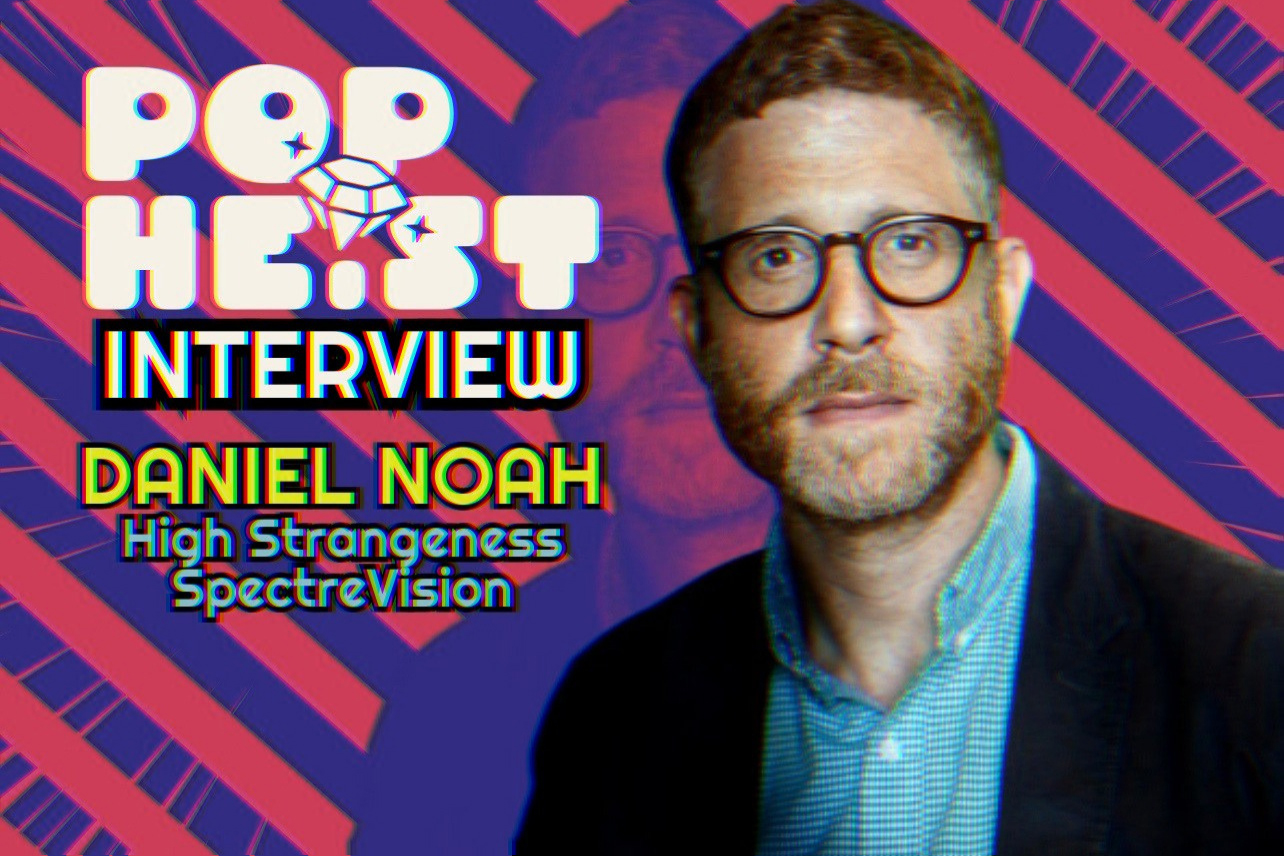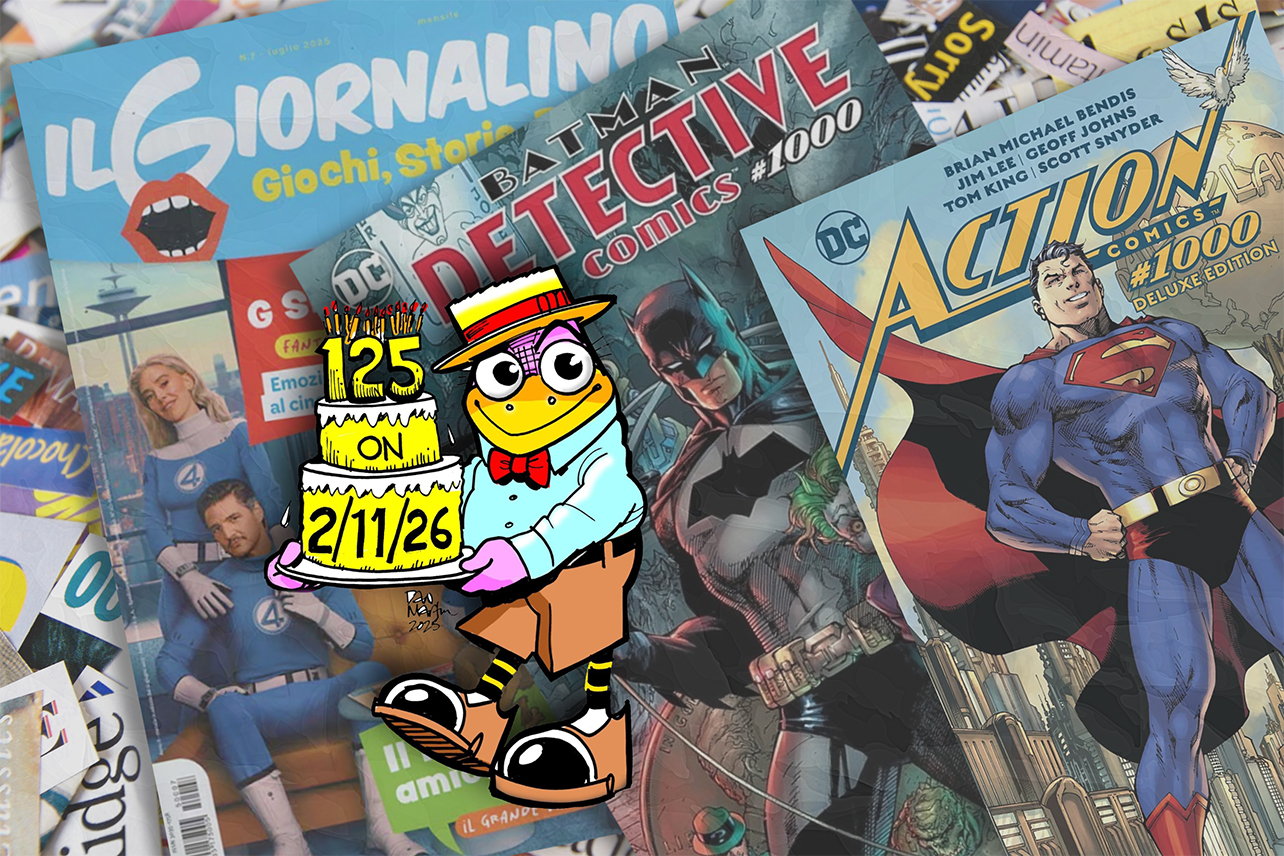From SpectreVision co-founder and real-life experiencer Daniel Noah and Oni Press, comes High Strangeness, a five-issue prestige anthology exploring uncanny phenomena at the edges of human experience. Noah's journey towards these edges began almost a decade ago while staying at the Stanley Hotel in Estes Park, Colorado — the hotel that inspired the iconic movie, The Shining. Noah, a skeptic at the time, had a startling, unexplainable encounter that shifted his worldview.
On a night during a film festival, he and some others — including co-founder of SpectreVision Elijah Wood — tried communicating with spirits using a Ouija board. After a few failures, the board began to work. They connected with what seemed to be a young girl, who spelled out the word "follow" and the number 324. Later, they discovered that many guests had reported paranormal activity around Room 324 — particularly the figure of a young girl. That moment forced Noah to confront the idea that his prior skepticism might not account for such events, sparking a broader interest in the unexplainable. This would include UFOs, hauntings, cryptids, and all things considered "high strangeness."
This newfound passion for all-things anomalous would lead Noah down a path of revelation and creation. Ahead of High Strangeness' debut on Oct. 8, Pop Heist's resident UFOlogist Ryan Sprague got the chance to chat with Noah about the new comic book series, his ambitious new podcast network, and so much more.
Ryan Sprague: What was the inspiration to create High Strangeness and how did your personal experiences shape this project?
Daniel Noah: Oni Press approached us to ask if we'd be interested in getting into comics. In that meeting, their President, Hunter Gorinson, noticed that I had the Time Life series Mysteries of the Unknown on my bookshelf. In a matter of minutes, we were like kids at a sleepover swapping paranormal stories, and by the end of the meeting we resolved that we would create the first proper Fortean comic book series — which is to say, a series built upon the premise of a unifying theory behind all paranormal phenomena, and one that would depict these various experiences as we know them to truly be: strange, beguiling, and without clear answers.
Can you walk us through the creative team behind the entire project and what they bring to it both creatively and collaboratively?
Oni recruited some of the finest names in comics, from Chris Condon to Chris Cantwell, to Jock and Christian Ward. As I chatted with each member of the team, I was surprised to learn that some of them are experiencers themselves, and those that aren't are emboldened by the premise of capturing the phenomenon as it is felt by the experiencers themselves.
Artists for the book and covers include Dave Chisholm, Noah Bailey, Valeria Burzo, Chloe Stawski, Christian Ward, Jock, Becca Carey and Malachi Ward.
We've also brought in a series of consultants to advise the creative teams. Each book covers a different aspect of the paranormal, from UFOs and Men In Black, to sasquatch, to synchronicities, to interdimensional portals and finally a journey outside of space and time. Jim Perry, host of the Euphomet podcast, consulted on Book One, Tim Renner and Bryce Johnson on Book 2, and we've got more experts lined up for the rest of the stories. We're absolutely committed to getting every detail just right.
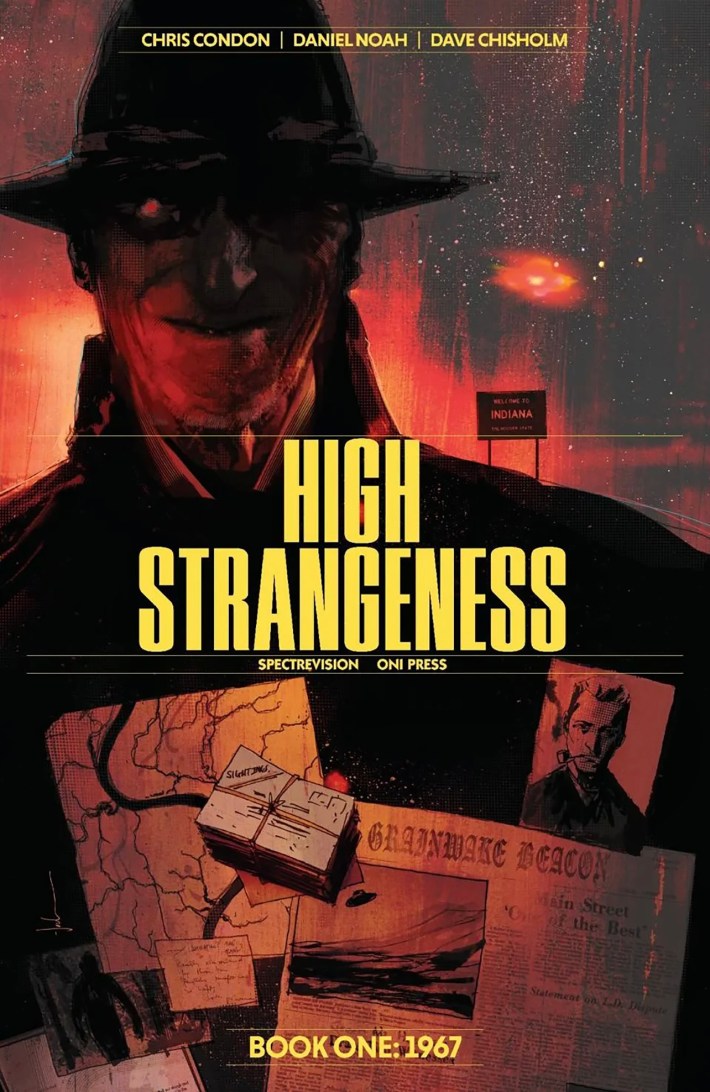
This is your first foray into comic book creation. What was that experience like compared to filmmaking?
I'm new to this medium, and there's no question that I have been profoundly spoiled. I've been put in a role that's similar to that of the showrunner in television. Having worked in television, as well as film and gaming, I've been stunned at the level of unconditional support Oni has shown in this very wild and risky endeavor. To date, it's been one of the most invigorating creative experiences of my career. I told them recently that they're never going to get rid of me!
How did you decide on the individual documented cases you wanted to explore in the series?
It's not so much inspired by any specific cases as it is informed by the totality of experiencer accounts — including my own. When one experiences a paranormal event, there's a shift in reality that's almost impossible to describe. This is precisely what art is meant to do: describe that which is otherwise indescribable. We've been stretching ourselves to the limits of our abilities to capture the uncanniness of these events. When these books come out, it's the reviews from experiencers that I'll be the most anxious about. I want this community to feel seen and understood. I hope they do.
High Strangeness is going to be a 5-part anthology series, but it's also interconnected. How did you land on this structure, and what ties the different stories together?
Though each story works as a stand alone, they exist in a single universe, and they snap together like an etheric jigsaw puzzle. The structure itself is an expression of the nonlinear quality of the phenomenon. It's all one big infinity circle that a reader could theoretically ride continuously and discover something new with each revolution.
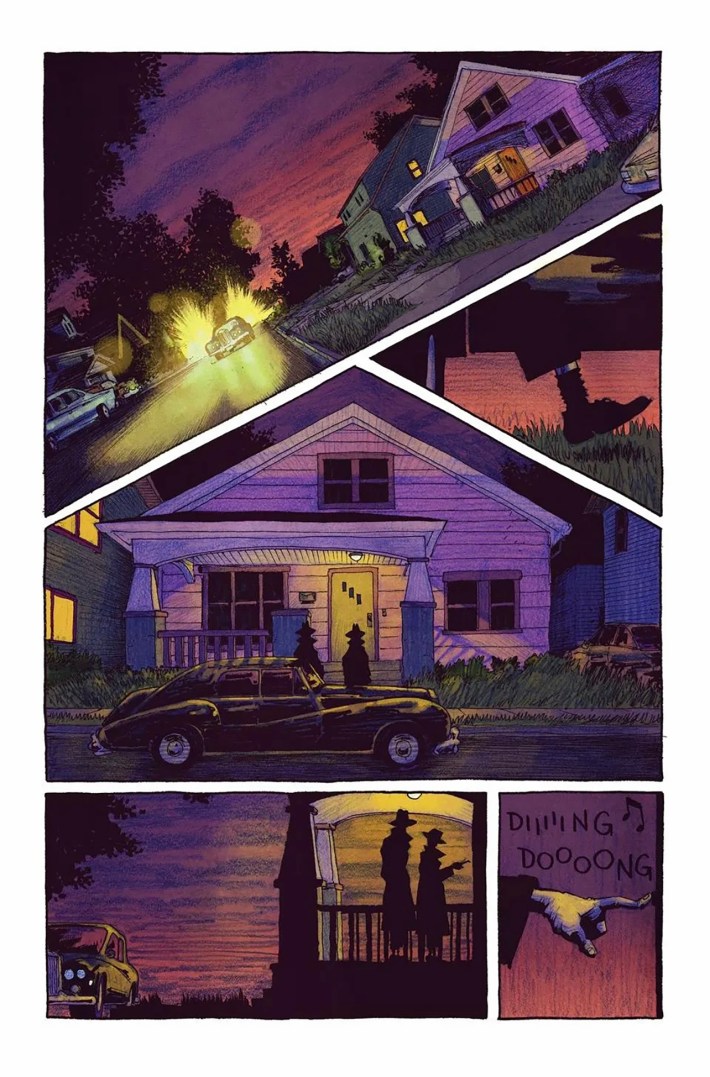
The first issue focuses on UFOs, Men in Black, and a missing teen. Why did you want to open with this particular case, and what tone were you hoping to set for the rest of the series?
UFOs are the Godzilla of paranormal phenomenon, so of course we had to start there. As for Men in Black, I'm a huge fan of the franchise of the '90s. But when I began reading about the actual Men In Black as reported by John Keel and Gray Barker, I realized that the reality of this was way weirder and more unsettling.
Men in Black are odd, stilted people who almost seem to be impersonating humans, known to show up on the doorsteps of people reporting on UFO sightings. They would arrive in weird black sedans with no license plates, making thinly veiled threats and refusing to explain who sent them. No one has ever figured out who they are or where they come from.
There is some anxiety about invoking MIB in comics since they've been so firmly established in the Lowell Cunningham universe. But at the end of the day, we decided that the truth wins out. I'll never stop loving the Cunningham / Sonnenfeld riffs. But I also want people to know about the real thing. This declaration of fidelity to the truth of the phenomenon seemed like a perfect way to launch the series.
In relation to UFOs, it seems we are seeing an increasingly militaristic and governmental perception of UFOs in the mainstream. Do you think this hurts the topic, helps it, or is it somewhere in between?
The fog of misinformation, obfuscation and psyops surrounding this topic is toxic, and sometimes even lethal. I made a decision some time ago that [the militaristic] element of the UFO story is neither my business, nor my interest. My focus is on the inner-world of the experiencer. Politics have no purchase in that sacred space.
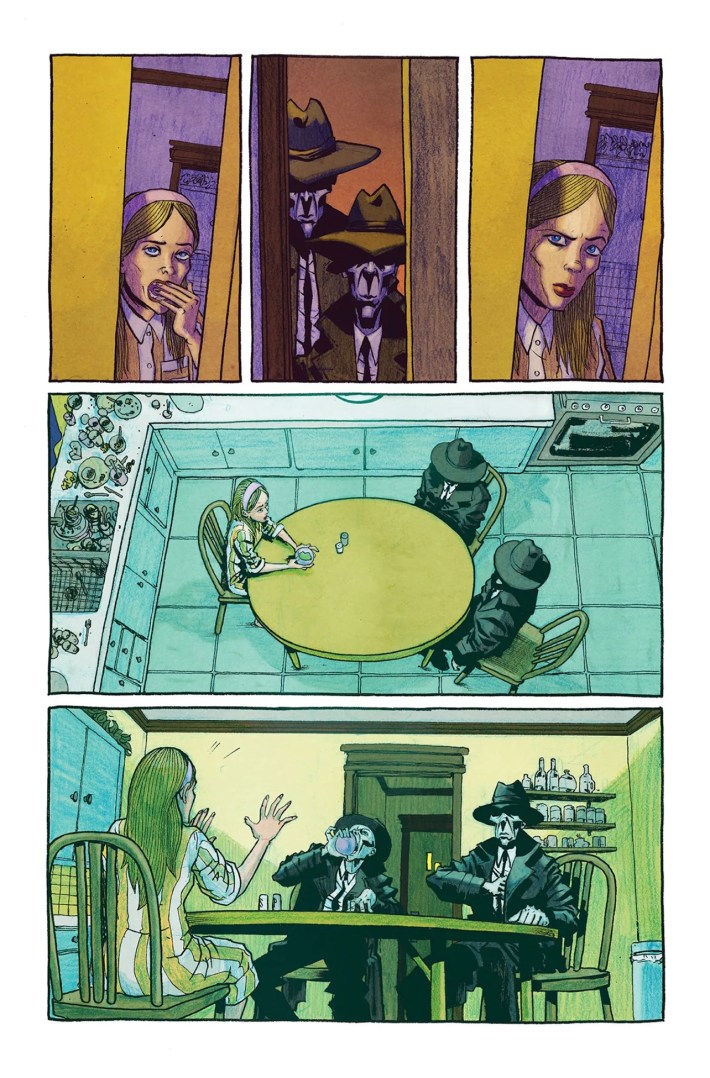
In another issue of High Strangeness, you tackle Sasquatch. What made you want to tackle the hairy hominids?
I'm obsessed! When I first came to terms with the fact that I was an experiencer about a decade ago, Bigfoot was the thing that I didn't take seriously. I mean — come on. That changed when I had an actual encounter on my honeymoon, in the mountains just outside of Santa Cruz. After that I realized — holy shit — if this is real, all bets are off.
It blows my mind that there isn't a single iconic title about Bigfoot in popular media. What's especially uncanny is that I wrote this story close to 20 years ago. It involves telepathy, which at the time I thought was my own invention. So when I discovered that telepathy is actually a real thing with Bigfoot, I was kind of stunned. Looking back, it almost feels like that story was somehow channeled from some future awareness on my own timeline, which is itself a fascinating mystery.
Bigfoot is a special guy, and I know that I'm not alone in my feelings of affection. To me, they are gentle, peaceful creatures who are exponentially more evolved spiritually than we humans.
Each issue also includes essays from researchers in different facets of high strangeness. Why was it important to include this layer, and how do you see it shaping how readers experience the stories?
Topping off each story with an overview of each phenomena as documented by experts and experiencers seems like a great way to ground this project in reality. It's my hope that readers' minds will be opened to these strange worlds, and that these books will inspire them to continue to investigate and learn about it all.
Do you have a favorite case of high strangeness?
Of course it's my hope that there will be a second "season" of High Strangeness, and there are certainly facets of the phenomenon that I'm dying to tackle. If I had to put one at the top of the list, I'd say it's probably the notion of sacred places as vestiges of the lost wisdom of ancient civilizations. Take the structures they found under the Pyramids of Giza, which seem to suggest some kind of highly advanced technology, like the engine under the hood of the pyramids themselves. What would happen if you turned that engine on?
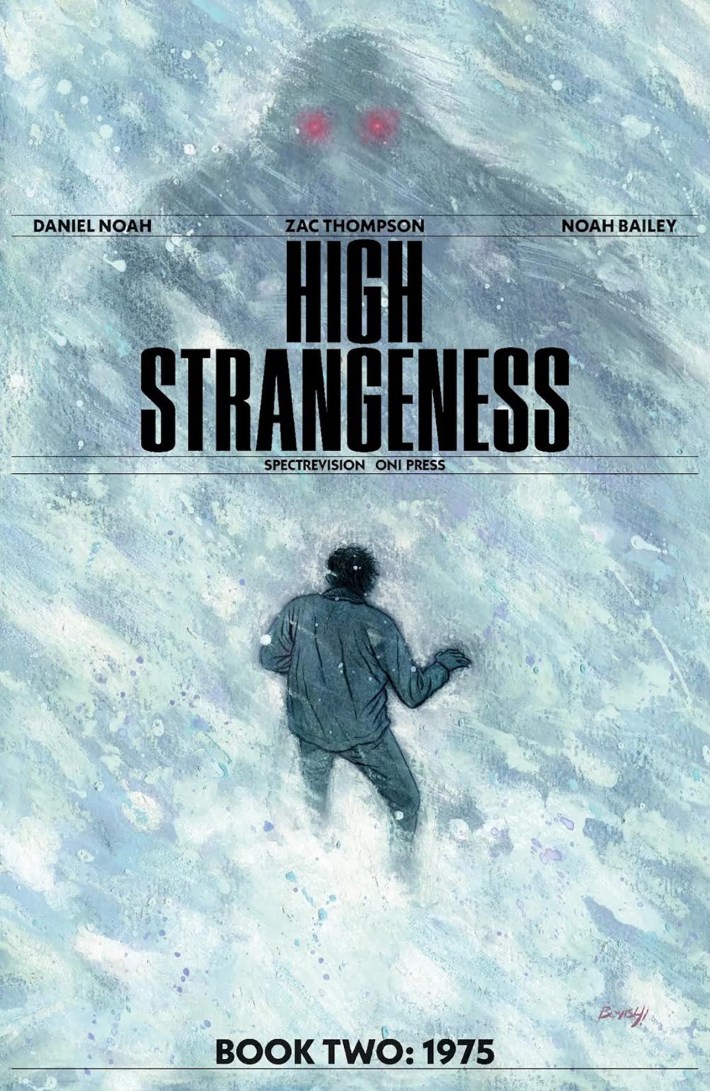
Oni Press seems to really embrace the idea of "keeping comics weird." What does that phrase mean to you, and how did it influence the risks you were willing to take with this series?
I just can't believe my luck that my first foray into comics is with a company that I feel such kinship with. I think Oni and SpectreVision might be twins separated at birth, reunited at last. It's my sincere hope that this is a partnership that will last a very long time.
Beyond comics, you co-founded SpectreVision Radio. How did that idea come about, and what's the bigger vision for it?
When I first realized I was an experiencer a decade ago, I remained "in the closet" for years, terrified of what would happen if I spoke about my experiences and unclear where to turn for information or comfort. It was in podcasts where I found both — including yours [Somewhere in the Skies]! And it was on podcasts that I finally gritted my teeth and started talking about my experiences.
It's funny: the community of horror fans and that of experiencers are strikingly similar in that they're made up of some of the warmest, most supportive and compassionate people you'll ever meet. With SpectreVision Radio, I wanted to put up a bat signal for experiencers everywhere that signals a safe and supportive community where we can be free to openly discuss these strange and often existentially challenging topics with the respect and commitment they deserve.
What are the questions you hope readers walk away asking themselves about High Strangeness?
For experiencers, I hope they'll walk away feeling their truth has been honored. For non-experiencers, I hope their minds will be a little opened to learning more about a topic that I'd argue is more important than any other within the panoply of issues affecting the human race. To recognize that the paranormal is real is to admit that nothing we think we know about our existence holds. It's much easier to close one's eyes and plug one's ears and pretend it isn't there than it is to deal with it. But we have to. The paranormal is unknown, and that's scary. But it's also a little glimpse into the reality that awaits us if we're able to level up our collective spirituality into the next stage of our evolution. We're at a tipping point. We must embrace this challenge.
At its heart, High Strangeness isn't only about UFOs, cryptids, or hauntings. It's about what happens when we open ourselves to the possibility that reality is far bigger, stranger, and more meaningful than we've been taught. Through his own experiences and creative vision, Daniel Noah has crafted a work that honors those who have encountered the unknown, while inviting the rest of us to look beyond fear and skepticism toward curiosity and growth. By blending art, history, and lived testimony, this series becomes more than storytelling. In giving voice to experiencers and grounding the fantastic in truth, High Strangeness becomes a celebration of curiosity itself. It challenges us to imagine a world where the unknown isn't something to fear, but something to guide us forward.
High Strangeness #1 hits comic book stores and online shops on Oct. 8th. You can find all things SpectreVision related at www.spectrevision.com.
